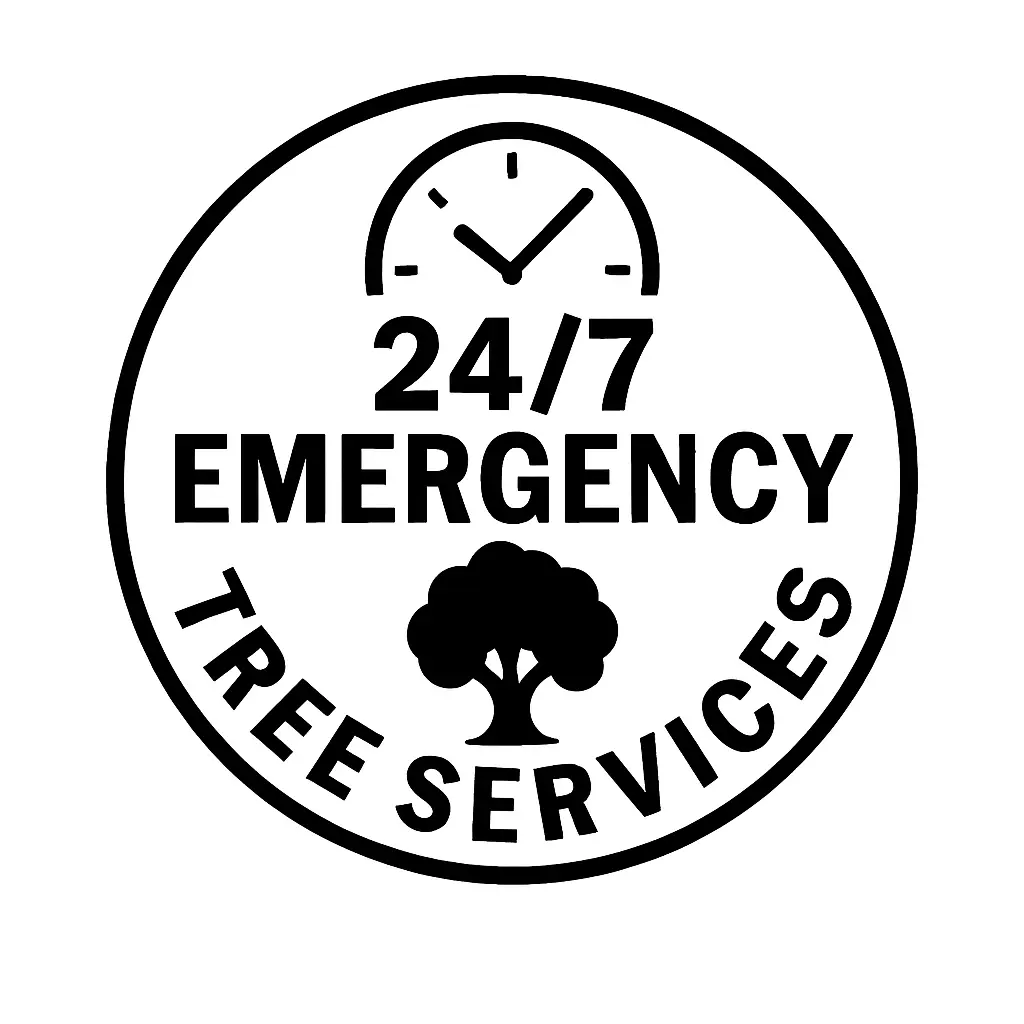Oak trees are natural landscape icons, offering beauty, shade, and ecological value. To ensure these majestic trees thrive, proper trimming is essential. In this guide, we’ll explore the art and science of oak tree trimming, covering everything from timing to techniques.
Understanding Oak Trees
Characteristics of Oak Trees Relevant to Trimming:
|
Characteristic |
Significance in Trimming |
|
Dense Canopy |
Requires strategic thinking for optimal sunlight penetration. |
|
Deep Root System |
Influences stability; pruning should consider root impact. |
|
Deciduous Nature |
Seasonal timing is crucial; consider dormancy for major cuts. |
|
Unique Growth Patterns |
Understanding branch angles aids in shaping and pruning. |
|
Disease Resistance |
Trimming can enhance overall tree health and disease prevention. |
Oak trees boast distinctive features that significantly impact how they should be trimmed. Their dense canopy, for example, necessitates careful thinning to ensure sunlight reaches lower branches. Additionally, their deep root system requires consideration during pruning to maintain stability.
Understanding the deciduous nature of oak trees is crucial for timing trimming activities. Optimal periods often coincide with dormancy, minimizing stress on the tree. Moreover, recognizing unique growth patterns, such as branch angles, informs proper shaping practices.
Furthermore, oak trees exhibit remarkable disease resistance, making regular trimming a proactive measure to enhance overall health and prevent potential issues.
Importance of Oak Trees in Landscaping and Property Value:
Beyond their biological characteristics, oak trees play a pivotal role in landscaping, contributing to the aesthetics and value of your property. Here’s why they are integral:
- Aesthetic Appeal: The grandeur of oak trees adds a timeless and majestic quality to any landscape. Well-maintained oaks can serve as focal points, enhancing the visual appeal of your property.
- Environmental Benefits: Oak trees contribute to ecological balance by providing oxygen, supporting wildlife, and improving air quality. Their presence elevates the overall environmental health of your surroundings.
- Property Value Enhancement: Mature and well-maintained oak trees can significantly increase property value. Potential buyers often appreciate these trees’ natural beauty and established landscape.
- Shade and Energy Efficiency: The expansive canopy of oak trees provides ample shade, reducing cooling costs in the warmer months. Strategically trimming for sunlight penetration can enhance energy efficiency around your property.
Understanding these aspects underscores the importance of oak trees in landscaping. It emphasizes the need for proper trimming to preserve their value and contribute positively to your property’s overall aesthetic and environmental quality.
When to Trim Oak Trees
Seasonal Considerations for Optimal Trimming:
|
Season |
Optimal Trimming Activities |
|
Winter |
Major structural pruning, removing dead or damaged branches. |
|
Late Winter to Early Spring |
Shaping and thinning for sunlight penetration. |
|
Summer |
Limited trimming for corrective purposes, avoiding major cuts. |
|
Fall |
Addressing disease or pest issues, preparing for winter. |
Understanding the seasonal rhythm of oak trees is crucial for effective trimming. Seasons offer different chances and difficulties for particular trimming tasks. Winter is ideal for major structural adjustments, such as removing dead or damaged branches. Late winter to early spring is the time for shaping and thinning, optimizing sunlight penetration for the growing season. Summer is generally a period for limited trimming, focusing on corrective measures without undertaking major cuts. Fall is suitable for addressing disease or pest issues and preparing the tree for the dormant winter months.
Factors Influencing the Timing of Oak Tree Trimming:
|
Factor |
Influence on Trimming Timing |
|
Age of the Tree |
Younger trees may require more frequent pruning for shaping. |
|
Health of the Tree |
Diseased or stressed trees may benefit from more frequent care. |
|
Weather Conditions |
Extreme weather events may necessitate immediate corrective pruning. |
|
Purpose of Trimming |
Safety concerns, aesthetic shaping, or disease prevention. |
Several factors influence the timing of oak tree trimming, ensuring it aligns with its specific needs. The tree’s age plays a role, with younger trees requiring more frequent pruning for shaping and structure. The tree’s health is crucial, and diseased or stressed trees may benefit from more frequent and targeted care. Weather conditions, especially extreme events, may prompt immediate corrective pruning to address potential hazards. The purpose of trimming, whether for safety, aesthetics, or disease prevention, also guides the timing of the pruning activities.
By considering seasonal variations and specific influencing factors, you can develop a tailored approach to oak tree trimming that maximizes the benefits and promotes your trees’ long-term health and beauty.
Tools and Equipment
Essential Tools for Safe and Effective Oak Tree Trimming
|
Tool |
Purpose in Trimming |
Price |
Where to Buy |
|
Pruning Shears |
Precision cutting of small branches and twigs. |
$25 – $50 |
Local garden centers, online retailers |
|
Loppers |
It is ideal for larger branches that pruning shears can’t handle. |
$30 – $70 |
Home improvement stores, online shops |
|
Pruning Saw |
Cuts through thicker branches with ease. |
$20 – $40 |
Outdoor equipment stores, online |
|
Pole Pruner |
Extends reach for trimming higher branches. |
$50 – $100 |
Garden supply stores, home centers |
|
Safety Gear |
To protect yourself, use a helmet, safety glasses, and gloves. |
$20 – $60 |
Hardware stores, safety equipment shops |
Tips on Proper Tool Usage and Maintenance:
|
Tips |
Description |
|
Keep Blades Sharp |
Regularly sharpen blades for cleaner cuts. |
|
Clean Tools After Use |
Remove sap and debris to prevent rusting. |
|
Oil Moving Parts |
Lubricate hinges and moving parts for smooth operation. |
|
Inspect for Damage |
Check for any damage or wear before each use. |
|
Follow the Manufacturer’s Instructions |
Adhere to guidelines for proper tool usage and maintenance. |
Techniques for Oak Tree Trimming
Step-by-Step Guide on Best Practices for Trimming Oak Trees:
- Assessment and Planning:
- Evaluate the tree’s overall health, identifying dead or diseased branches.
- Plan the trimming to maintain a balanced and aesthetically pleasing shape.
- Selective Pruning:
-
- Prioritize removing dead or crossing branches to improve airflow and sunlight penetration.
- Trim only the necessary branches to avoid unnecessary stress on the tree.
- Proper Cut Placement:
-
- Make clean cuts above a lateral bud or branch junction to encourage proper healing.
- Steer clear of leaving stubs since they might attract insects and cause deterioration.
- Thinning the Canopy:
-
- Thinning reduces the density of the canopy, allowing sunlight to reach lower branches.
- Remove overcrowded branches, focusing on maintaining the tree’s natural shape.
- Branch Collar Preservation:
-
- Identify and preserve the branch collar—the swollen area where a branch meets the trunk.
- Cutting just outside the collar minimizes the risk of infection and aids in efficient healing.
- Consideration of Tree Growth Habits:
-
- Understand the natural growth habits of the oak tree, such as branch angles and growth patterns.
- Shape the tree while respecting its inherent structure for a more natural appearance.
- Timing and Seasonal Considerations:
-
- Align trimming activities with the appropriate season, considering the tree’s dormancy and growth phases.
- Avoid major pruning during intense stress, such as extreme weather conditions.
Common Mistakes to Avoid During the Trimming Process:
|
Mistake |
Consequences |
|
Over-Pruning: |
Reduces the tree’s strength and makes it more vulnerable to disease. |
|
Improper Cut Placement: |
It can lead to delayed healing and the potential for infections. |
|
Ignoring Branch Collar: |
Increases the risk of disease and decay at cut sites. |
|
Neglecting Safety Gear: |
Exposes the pruner to potential injuries from falling debris. |
|
Ignoring Seasonal Timing: |
This may stress the tree and impede its ability to recover. |
|
Excessive Thinning: |
Can compromise the tree’s structural integrity. |
Avoiding common mistakes during oak tree trimming is crucial for the tree’s well-being. Over-pruning weakens the tree, while improper cut placement and neglecting the branch collar can lead to delayed healing and disease. Safety gear is essential to prevent injuries; adhering to seasonal timing ensures the tree can recover effectively. Excessive thinning can compromise the tree’s structural integrity, making it prone to damage. Following best practices and avoiding these pitfalls will contribute to your oak trees’ long-term health and beauty.
Professional Assistance
Indicators for When to Hire Professional Arborists:
|
Indicator |
Description |
|
Tree Size and Complexity: |
Large or mature trees with complex structures. |
|
Disease or Pest Infestation: |
Signs of severe disease or pest infestation. |
|
Proximity to Structures: |
Trees near buildings, power lines, or other structures. |
|
Previous DIY Trimming Issues: |
If past trimming attempts have resulted in problems. |
|
Unsure of Trimming Techniques: |
Lack of knowledge or experience in proper trimming methods. |
Identifying when to hire professional arborists involves recognizing specific indicators. Large or mature trees with intricate structures may require specialized skills. Severe disease or pest infestations, especially beyond the scope of home remedies, warrant professional attention. Trees near structures pose potential risks and often necessitate expert care. If previous DIY trimming attempts have resulted in issues, it’s a clear signal to consult professionals. Additionally, seeking expert advice is wise if you are unsure about proper trimming techniques.
Benefits of Seeking Expert Help for Complex or Large-Scale Trimming:
|
Benefit |
Description |
|
Specialized Knowledge: |
Arborists possess expertise in tree biology and health. |
|
Safety Assurance: |
Professional arborists adhere to strict safety standards. |
|
Proper Equipment: |
Access to specialized tools and equipment for any scale. |
|
Preservation of Tree Health: |
Trained arborists prioritize the long-term health of trees. |
|
Legal and Regulatory Compliance: |
Ensures adherence to local regulations and guidelines. |
Enlisting professional help for complex or large-scale trimming offers numerous benefits. Arborists bring specialized knowledge in tree biology, ensuring precise and effective trimming. Safety is a top priority for professionals, with adherence to strict safety standards during the trimming process. Professional arborists come equipped with the proper tools and equipment for any trimming scale, ensuring efficiency and effectiveness. They prioritize preserving tree health, employing techniques that promote long-term vitality. Moreover, seeking professional assistance ensures compliance with legal and regulatory requirements, addressing any potential issues related to tree care regulations.
Understanding the signs that your trees need professional help and the advantages of working with specialists can help you make well-informed decisions to protect their health and well-being, particularly when dealing with difficult or extensive pruning tasks.
Aftercare and Maintenance
Guidelines for Post-Trimming Care to Ensure Tree Health:
|
Aftercare Practice |
Description |
|
Mulching: |
To control soil temperature and conserve moisture, apply an organic mulch layer around the base. |
|
Watering: |
Adequate watering, especially during dry spells, to help the tree recover and stimulate new growth. |
|
Monitoring for Pests and Diseases: |
Examine the tree regularly for indications of pests or illnesses, and treat quickly if any are found. |
|
Avoiding Fertilization Immediately After Trimming: |
Postpone fertilization to allow the tree to focus on recovery; resume according to a regular schedule. |
|
Pruning Wounds Sealant (if necessary): |
Apply a pruning wound sealant on larger cuts to promote healing and prevent infections. |
Post-trimming care is crucial to promote the health and recovery of oak trees. Mulching helps retain soil moisture, regulates temperature, and discourages weed growth. Adequate watering, especially during dry spells, assists the tree in recovering from the stress of trimming and stimulates new growth. Regular monitoring for pests and diseases ensures early detection and intervention if issues arise. It’s advisable to avoid immediate fertilization after trimming, allowing the tree to focus on recovery before resuming a regular fertilization schedule. In some cases, applying a pruning wound sealant to larger cuts can promote healing and prevent infections.
Tips on Ongoing Maintenance Practices:
|
Maintenance Practice |
Description |
|
Regular Pruning for Shaping: |
Periodic trimming to maintain the desired shape and structural integrity of the tree. |
|
Inspecting for Structural Issues: |
Periodically check for signs of structural issues, such as weak branches or splits, and address them promptly. |
|
Soil Testing and Amendments: |
Conduct soil tests to assess nutrient levels and make amendments as needed for optimal tree health. |
|
Appropriate Fertilization: |
Ascertain the demands and seasonal requirements of the tree before implementing a regular fertilization regimen. |
|
Monitoring Environmental Conditions: |
Stay aware of changing environmental conditions that may impact the tree and adjust care accordingly. |
Ongoing maintenance practices are key to sustaining the health and vigor of oak trees. Regular pruning for shaping helps maintain the desired form and structural integrity. Periodic inspections for structural issues, such as weak branches or splits, allow timely intervention. Conducting soil tests and making amendments based on nutrient levels ensures the tree receives optimal nutrition. Follow an appropriate fertilization schedule tailored to the tree’s needs and seasonal requirements. Monitor changing environmental conditions that may impact the tree and adjust care practices accordingly.
By implementing these aftercare and maintenance practices, you contribute to your oak trees’ long-term health and beauty, ensuring they remain resilient and thrive in their environment.
Conclusion
In conclusion, mastering oak tree trimming combines art and science. By understanding the unique characteristics of oak trees, employing the right tools and techniques, and being aware of when to get expert assistance, you can preserve the health and beauty of these amazing trees. Follow our comprehensive guide to becoming a steward of your oak trees, enhancing their vitality, and enhancing the general health of your landscape. Happy trimming!





